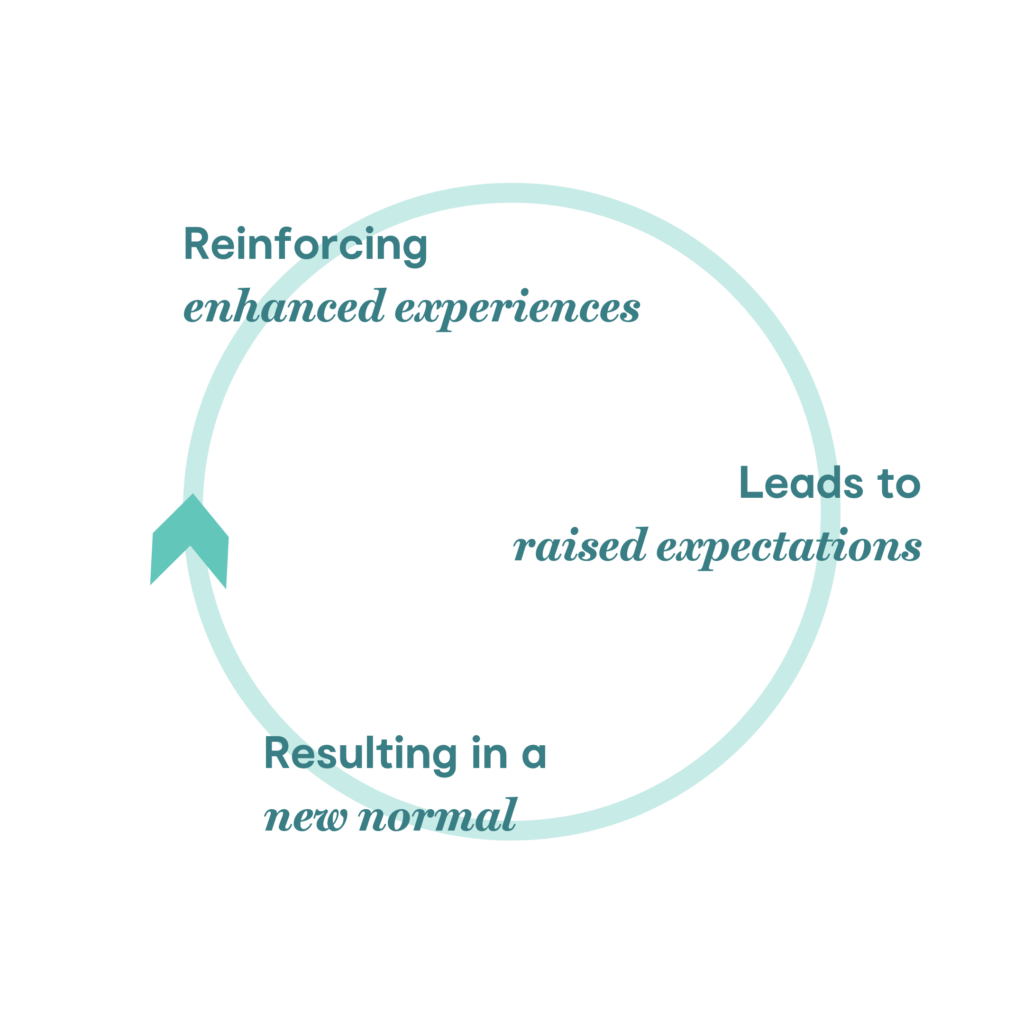The Rise of the Power Customer
The online customer shift has driven customer experience and eCommerce overhauls throughout Australia. The State of the Connected Customer report found that more than half of all interactions between local customers and businesses this year were digital, compared to just 36 per cent last year and a stream of customer expectations have changed with the movement.
Empathy, personalisation, convenience, connected experiences, and digital transformation are eliminating unnecessary burdens on customers who are navigating change and uncertainty. The improved access to information, ever-widening choice of goods and services, and capability for customers to share their experiences widely online have also consolidated consumer power.

Customers are finding new ways to deal with their overwhelming wealth of choice and can use tools such as social media or price comparison websites to inform their decisions. They are demanding more from brands and expect businesses to demonstrate their values and keep their promises.
The traditional path to purchase has been disrupted with diversions and delays, and the customer journey is looking far less like a traditional funnel. Customers prefer to ‘pull’ information rather than have businesses ‘push’ it onto them and will now look for inspiration from both brands and their trusted peers.
Easy access to information creates consumer power.
The internet empowers customers to become smarter shoppers with tremendous amounts of information. Customers can avoid marketers all together by talking to other customers and making their own comparisons. Customer reviews, seller ratings, search engines, and comparison websites enable customers to research a brand’s claims, gain cost information, and assess alternatives. It also enables simplified, direct transactions, cutting out the need for middlemen.
Social networks and forums also enable customers to share their experiences and seek out advice. The result is a growing gap between consumer expectations and the ability of businesses to meet them. The only way for businesses to deal with millions of individual expectations is to invest in developing capabilities to integrate and track customer journeys and offer targeted responses in real-time.

The digital revolution is driving a positive feedback loop of raised customer expectations.
Even prior to COVID, brands were struggling to stay responsive to rising customer expectations. Every new digital innovation creates new customer expectations and marketers are constantly confronted by the question: what will my customers want next? Consumer expectations are no longer category related and expectation transfer is the mechanism by which new innovations from around the world shape what your customers will expect from you next. Consider how Uber has sparked the expectation for service to be delivered to your doorstep within a couple of clicks.
In 2019, 14% of money spent by consumers was on online channels and that number is expected to increase to 22% by 2024, bringing a flurry of new digital experience innovations and customer expectations
88% of consumers expect their experience with brands to keep getting better in the future, and 51% say that most companies fall short of their expectations for great experiences. The experience gap also gets bigger when enhanced experiences, lead to raised expectations and a new norm.

Closing the experience gap is a source of competitive differentiation.
Businesses are starting to regain ownership of the consumer journey by listening, inspiring, and co-creating. Social listening tools allow marketers to track what consumers are saying about their products and services, while engaging directly with them.
Real-time search trends are also an accurate reflection of the ‘consumer voice’ and investing in analytics capabilities to monitor on-site performance is a strong way to find growth opportunities.
A listen first approach helps marketers to determine the right engagement methods and can then use content creation to drive conversations and fuel customers with the right information, enabling them to move independently through the shopping journey, creating trust and increasing their loyalty.
Loyalty programs and social media communities can be used to encourage customers to share their experiences and drive advocacy. They can also spark conversations with active followers so that new product and service ideas can be crowd sourced.
Knowledge is power.

The digital shift has handed additional information, choice, and power to the consumer. With a greater understanding of their rights, customers have become ‘professional shoppers’ and are far less inclined to take a risk on a purchase. The extended path to purchase gives businesses more opportunities to engage with consumers and marketers need to help customers ‘pull’ information throughout their decision-making process.